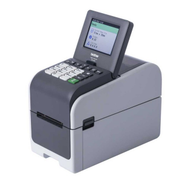Top Picks for the Best Label Printer for Food Packaging
13th Aug 2025
TL;DRChoosing the right printer depends on your food product’s shelf life, branding needs, compliance requirements, and production scale. Thermal printers (like Brother TD2350 or TSC TX310) are ideal for high-speed, monochrome labels, great for barcodes, ingredients, and expiration dates. Colour printers (such as Afinia L502 or VIPColor VP500) are ideal for retail branding, full-colour labels, and custom designs with allergen/bilingual information. Key buying factors include print resolution (203–1600 dpi), label durability, software compatibility (such as BarTender and NiceLabel), and speed. CFIA compliance requires bilingual, clear, and allergen-safe labelling. Thermal and colour printers can both meet this with the right setup. Direct thermal is suitable for short-term labels; thermal transfer is ideal for long-term use, particularly in cold storage. Brother, Toshiba, Honeywell, TSC, Godex, Afinia, VIPColor, and Primera, each serving different business needs. |
|---|
Choosing the best label printer for small food business packaging isn’t just about print quality; it’s about compliance, durability, branding, and speed. Whether you're printing ingredient labels, nutritional facts, or eye-catching colour logos for retail shelves, the right choice of printer can streamline operations and elevate your product presentation. Below, we’ve handpicked the top thermal and colour label printers that meet Canada’s food safety standards and deliver professional results for everything from frozen goods to gourmet packaging.
What are the Key Features to Consider When Choosing a Food Label Printer in Canada?
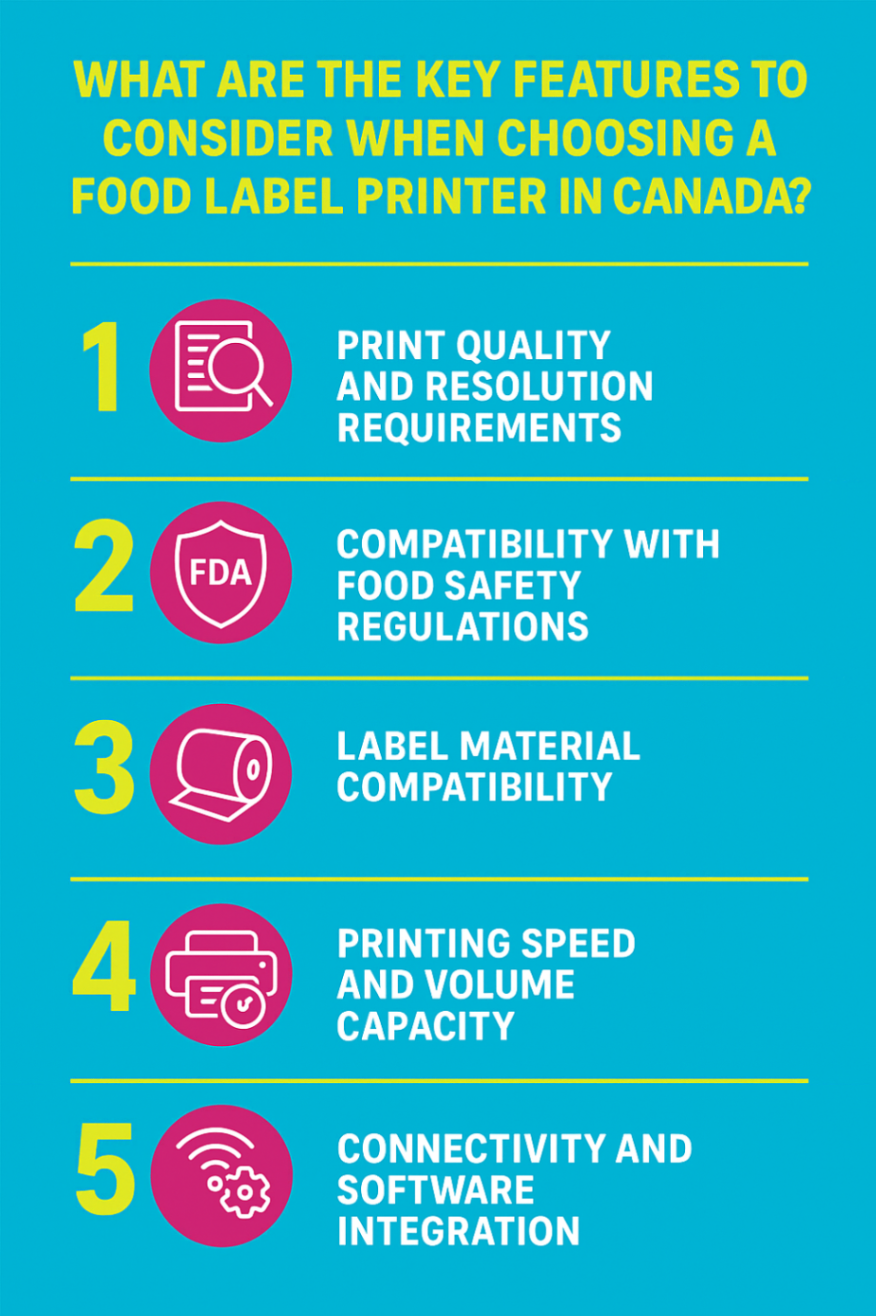
Choosing the best label printer for food packaging in Canada requires more than just selecting a popular model. You need a machine that meets health regulations, produces sharp prints, and supports bilingual labelling for a small business, while also integrating smoothly with your workflow. Below are five key features to evaluate when selecting the right label printer for your food business.
1. Print Quality and Resolution Requirements
Label clarity is crucial, particularly for ingredient lists, nutritional information, allergen details, and barcodes. For introductory text or barcodes, 203 dpi resolution may suffice. However, if you're printing bilingual labels or branded retail packaging, opt for a 300+ dpi thermal printer or 1200–1600 dpi inkjet for vibrant, high-definition output.
2. Compatibility with Food Safety Regulations
Canada’s food labelling is governed by CFIA (Canadian Food Inspection Agency) guidelines, which require precise and compliant labelling. This includes bilingual (English/French) text, date codes, allergen declarations, and accurate content formatting. Choose printers that support regulatory label templates and pair them with software like BarTender or NiceLabel for easy compliance.
3. Label Material Compatibility
Label durability is critical in the food industry. Choose thermal printers that support polypropylene or vinyl labels for frozen or refrigerated goods. For colour printers, use inkjet-compatible glossy paper or waterproof polypropylene to prevent smudging and ensure professional presentation. Always match your printer type with the appropriate label media.
4. Printing Speed and Volume Capacity
Your production scale determines the right speed. For low- to mid-volume operations, desktop printers with speeds of 4–6 inches per second may suffice. High-volume businesses should invest in industrial printers that handle large rolls and operate at speeds of up to 10 ips. Colour printers may be slower but excel in custom batch runs.
5. Connectivity and Software Integration
Efficient food label printing relies on smooth data transfer. Look for printers with USB connectivity, Ethernet, Wi-Fi, or Bluetooth, as well as cloud-based integration that syncs with your inventory or ERP system. Additionally, ensure compatibility with label design software, allowing you to easily create, update easily, and print multilingual or seasonal label variations.
Thermal vs. Colour Label Printers for Food Packaging: What's the Difference?
When looking for the best label printer for food packaging, one of the most important decisions you'll make is whether to go with a thermal printer or a colour label printer. Both serve different purposes depending on the type of food product you're labelling, the regulatory requirements you must meet, and how you want your packaging to appear to customers. In this section, we’ll explore the differences so you can choose the right printer for your food labelling needs in Canada.
When to Use Thermal Printers for Food Labels?
Thermal printers are often the go-to choice when speed, cost efficiency, and durability are top priorities. If you're printing high volumes of ingredient labels, nutritional facts, expiration dates, or barcode stickers, thermal printing is an ideal solution.
There are two types:
-
Direct Thermal Printers (like the Brother TD2350DSA203): Best for short-term labels such as those used on fresh produce or deli items.
-
Thermal Transfer Printers (such as the TSC TX310 or Godex G500): Utilize a ribbon to produce more durable labels, ideal for frozen goods or items stored in humid environments.
Pros of Thermal Printers:
-
Low maintenance and fast print speeds
-
Crisp monochrome print ideal for compliance labels
-
Compatible with waterproof and smudge-resistant materials
If your focus is on clear, functional labels over aesthetics, thermal models may be the best label printer for food packaging in your operation.
When to Use Colour Label Printers for Food Labels?
Colour label printers excel in producing vibrant, full-colour designs with sharp resolution, perfect for food brands seeking to make a lasting impression on the shelf. Whether you're selling artisan jams, craft beverages, or gourmet sauces, colour label printers help reinforce brand identity directly on the label.
Top models like the Afinia L502, VIPColor VP500, and Primera LX4000 are well-suited for printing labels with:
-
Full-colour logos, ingredient backgrounds, bilingual layouts, or QR codes
-
Custom branding for seasonal or private-label items
-
High-resolution images for retail-ready product presentation
Pros of Colour Label Printers:
-
High-quality, professional label appearance
-
Ideal for on-demand printing of multiple SKUs or short batches
-
Supports compliance with bilingual and allergen-friendly labelling standards
If you're aiming for retail shelf appeal and brand visibility, a colour model is often the best label printer for food packaging for small to mid-sized food producers.
How to Choose Between Thermal and Colour Printers?
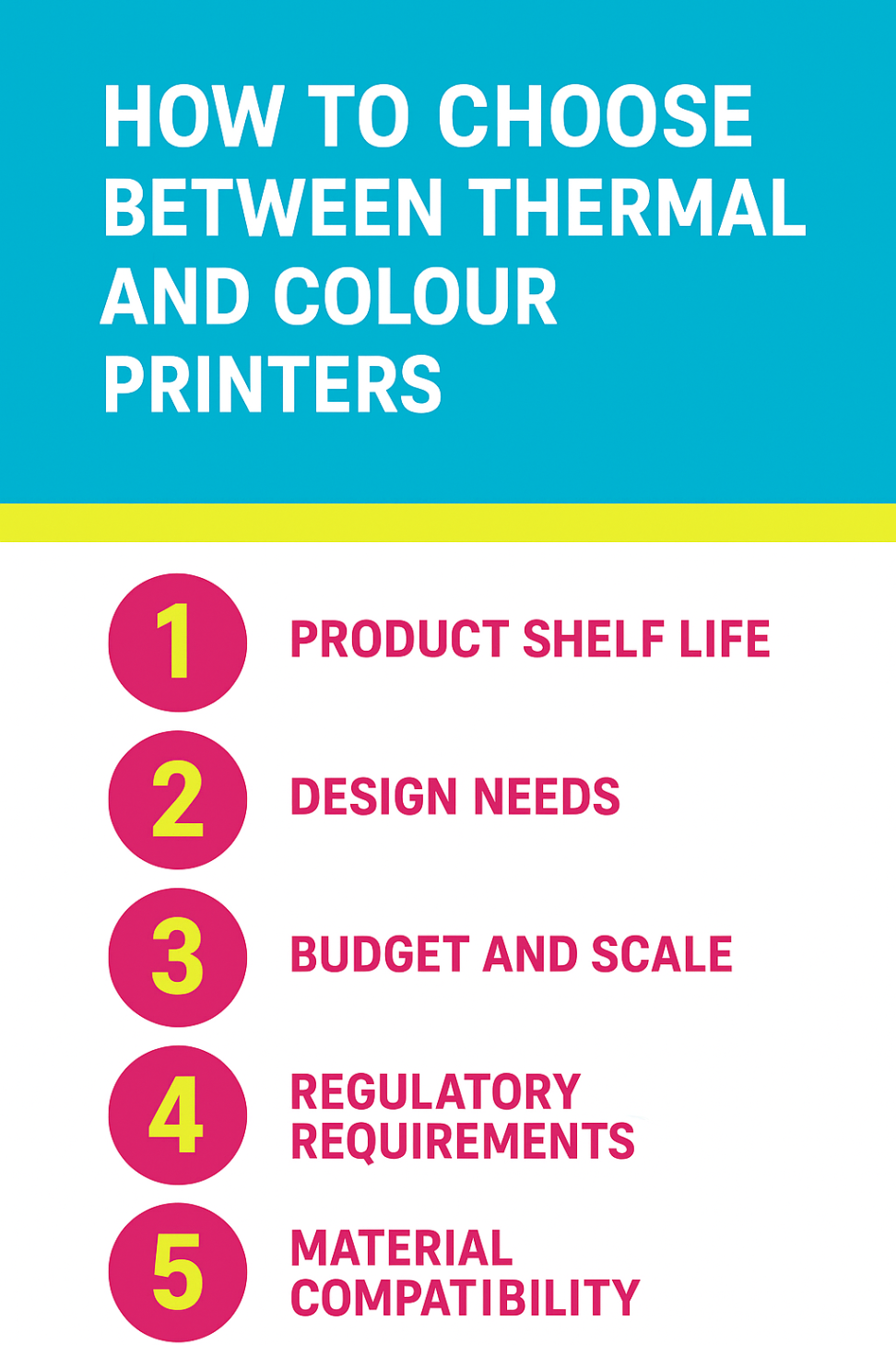
When selecting the best label printer for food packaging, think about:
-
Product shelf life: Use thermal printers for short-term use or logistics; colour printers for shelf-stable packaged foods.
-
Design needs: Stick with thermal if you're printing basic black text; go colour if you need attractive, branded packaging.
-
Budget and scale: Thermal printers are more cost-effective upfront and ideal for high-volume, low-complexity labels. Colour printers are more expensive but offer marketing advantages.
-
Regulatory requirements: Both options support compliant food labels, but colour helps better highlight allergens and safety warnings.
-
Material compatibility: Ensure your printer supports food-safe, waterproof, freezer-proof, or removable labels.
Ultimately, the best label printer for food packaging depends on your business goals, whether you prioritize speed and compliance or branding and customer engagement.
What are the Top-Rated Label Printers for Food Packaging?
Finding the best label printer for food packaging involves striking a balance between compliance, print quality, and production speed. Whether you need crisp black-and-white labels for ingredients or vibrant, branded packaging for retail shelves, these top-rated label printers available at DuraFastLabel.ca cater to a wide range of food packaging requirements.
Below, we explore the leading thermal and colour label printers trusted by Canadian food businesses.
1. Brother TD2350DSA203 2" - 203 dpi Direct Thermal Label Printer
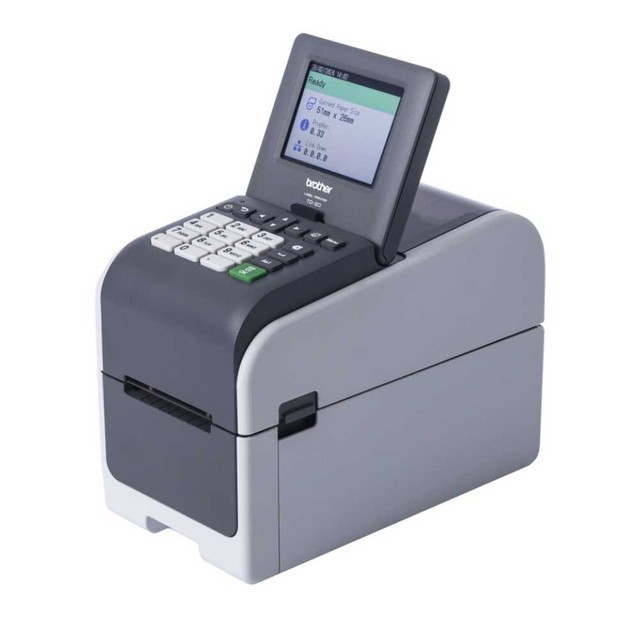
Compact and efficient, the Brother TD2350DSA203 is ideal for businesses that require fast, monochrome label output at an affordable pricing point. With 203 dpi resolution and support for a 2-inch label width, it's suitable for printing ingredient labels, expiration dates, and barcode tags. Direct thermal technology eliminates the need for ink or toner, making it a budget-friendly option for short-term food labels.
Key Features:
-
2-inch media width
-
203 dpi resolution
-
Direct thermal technology
-
Compact desktop footprint
Pros:
-
Low maintenance and cost-effective
-
Ideal for short-term labelling like deli or bakery products
-
Quick startup and minimal training required
Cons:
-
Not suitable for cold storage or long-lasting labels
-
Monochrome only, no support for branding graphics
2. Toshiba Tec BV420D-TS02-QM-S | 4" 300 dpi Direct Thermal Desktop Printer
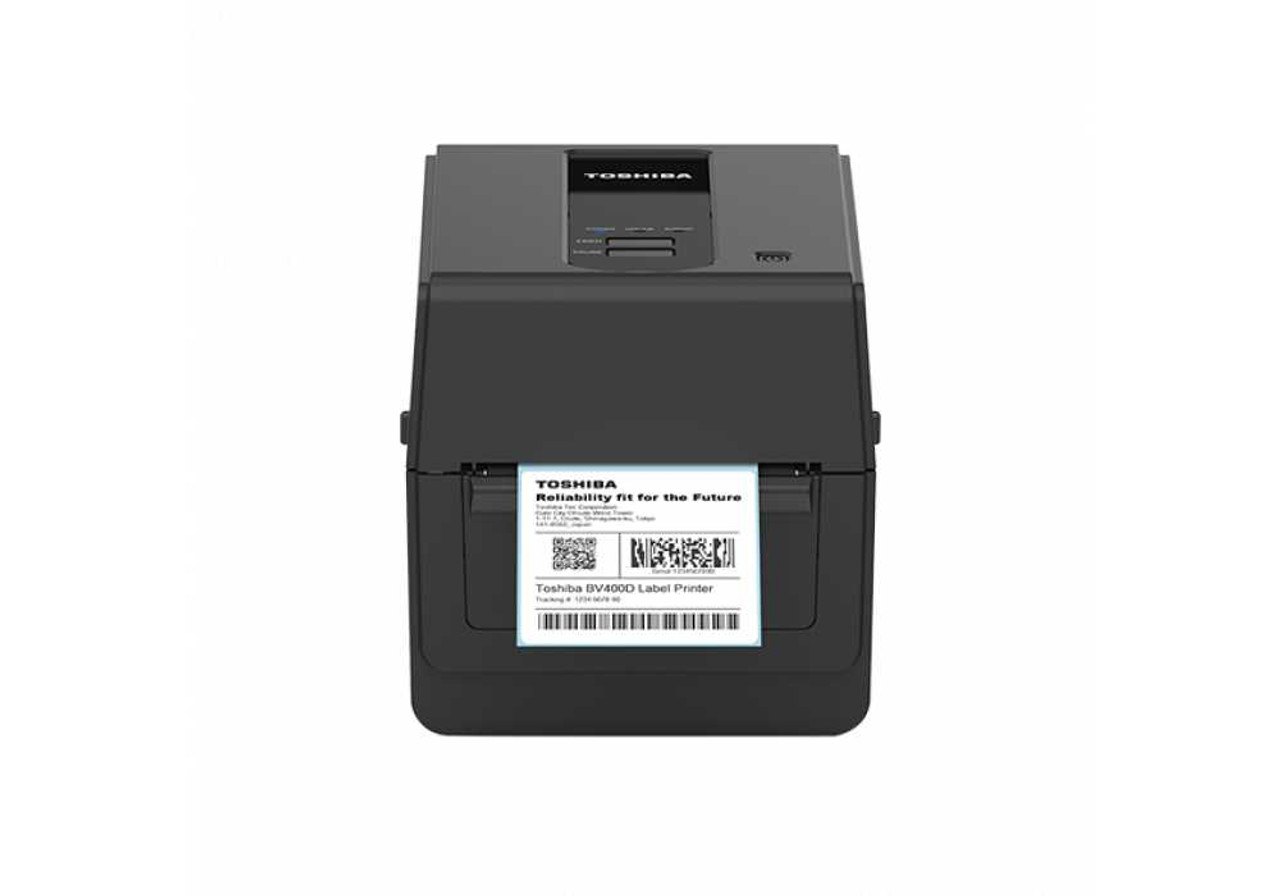
Known for its 300 dpi high-resolution output, the Toshiba Tec BV420D delivers crisp text and barcode clarity. This printer is ideal for labels requiring clear allergen declarations or bilingual compliance on food packaging. Its compact design fits seamlessly in small workspaces and is easy to operate, making it one of the best label printers for food packaging in high-turnover environments.
Key Features:
-
4-inch width
-
300 dpi resolution
-
5 inches per second print speed
-
Modern, compact design
-
No ribbon required (direct thermal print technology)
Pros:
-
High-resolution output for clear ingredient and allergen labels
-
Space-saving size ideal for countertop environments
-
Seamless operation with most POS systems
Cons:
-
Direct thermal only; labels may fade over time
-
Limited to black-and-white printing
3. Honeywell PC45d 4" Wide 203 dpi 8 ips Desktop Direct Thermal Label Printer
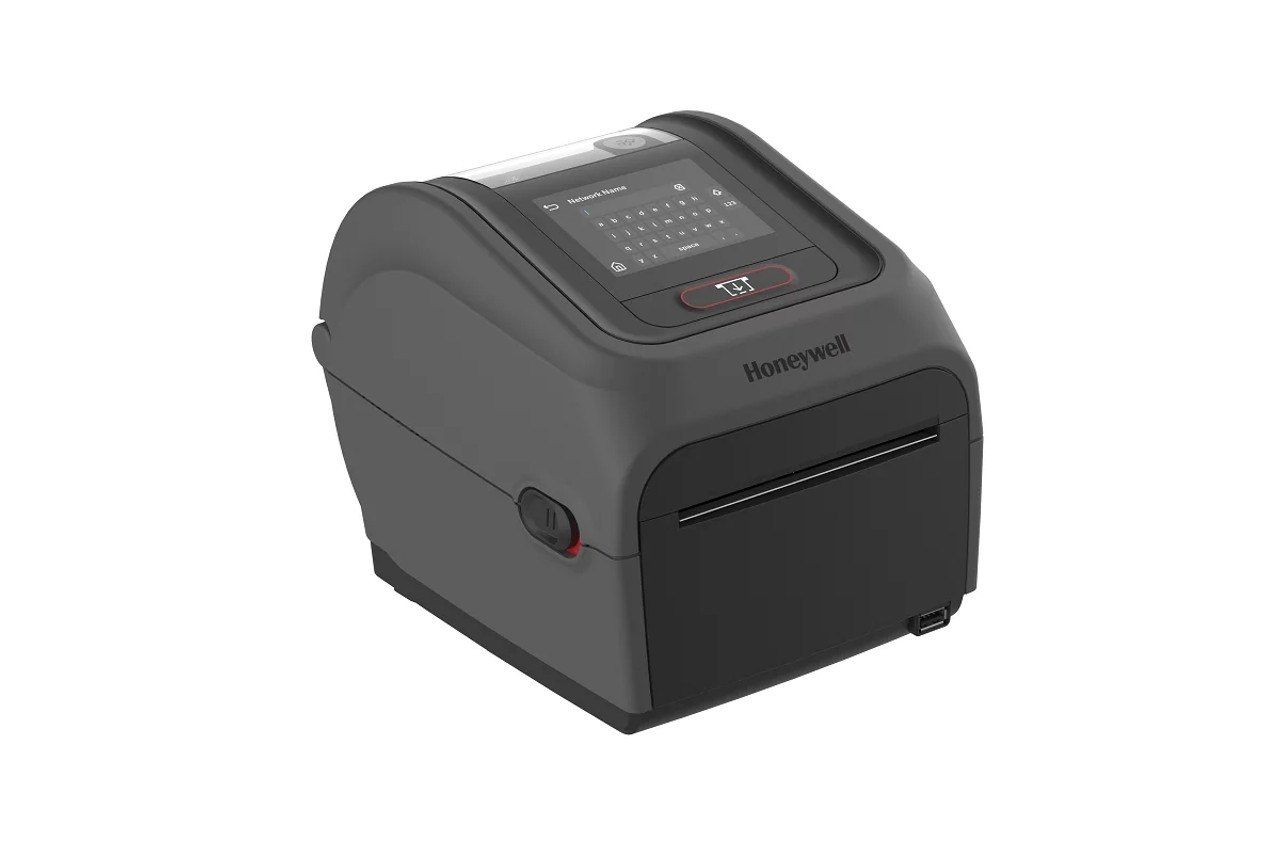
Designed for speed, the Honeywell PC45d offers an 8-inch-per-second print speed and a rugged build. With 203 dpi resolution, it's suited for bulk food production environments where fast, legible, direct thermal labels are needed. It's compatible with multiple media types and integrates easily with inventory or labelling systems.
Key Features:
-
203 dpi resolution
-
4-inch label support
-
High-speed 8 ips printing
-
No ribbon required (direct thermal technology)
Pros:
-
Fast performance for high-volume food production
-
Durable and reliable in warehouse environments
-
Easy integration with ERP systems
Cons:
-
Not suited for freezer or long-term storage labelling
-
Lacks colour and advanced graphics capability
4. TSC TX310-A002-1201 | TX310 300 dpi - 4" - 6 ips Thermal Transfer Label Printer
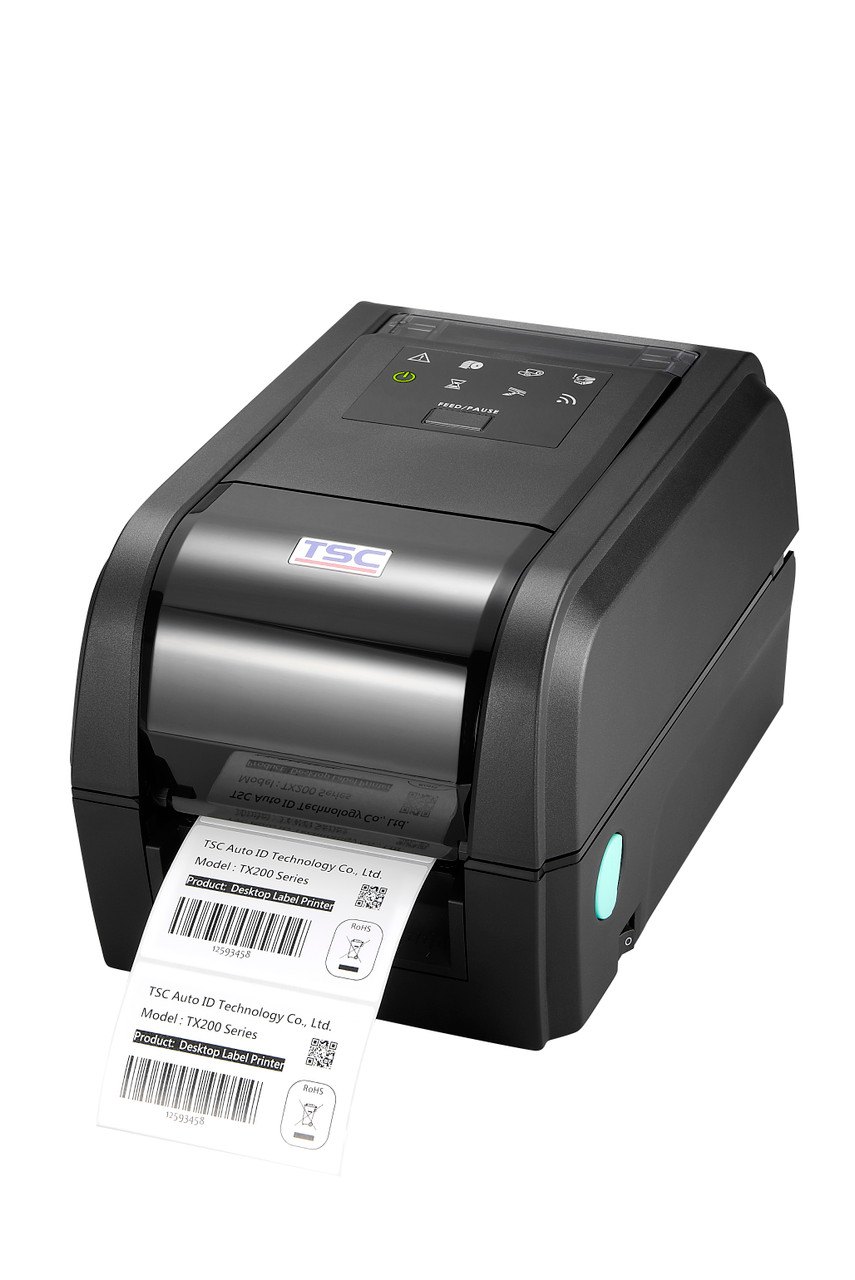
A popular choice for medium- to high-volume operations, the TSC TX310 utilizes thermal transfer printing, enabling the creation of highly durable, smudge-proof labels. With 300 dpi resolution and 6 ips speed, it’s excellent for ingredient declarations, cold-storage food items, and regulatory compliance labelling, a top pick among users seeking the best label printer for food packaging with added durability.
Key Features:
-
300 dpi high-resolution output
-
4-inch width
-
6 ips print speed
-
Thermal transfer and direct thermal support
-
Uses 984 ft (300m) length ribbons
Pros:
-
Excellent for cold-storage and durable labels
-
Crisp print quality for nutrition panels and barcodes
-
Supports a wide range of label materials
Cons:
-
Requires ribbons (ongoing consumable cost)
-
Larger footprint than basic desktop printers
5. Godex GE300 4-Inch Wide 203 dpi Desktop Thermal Transfer Label Printer
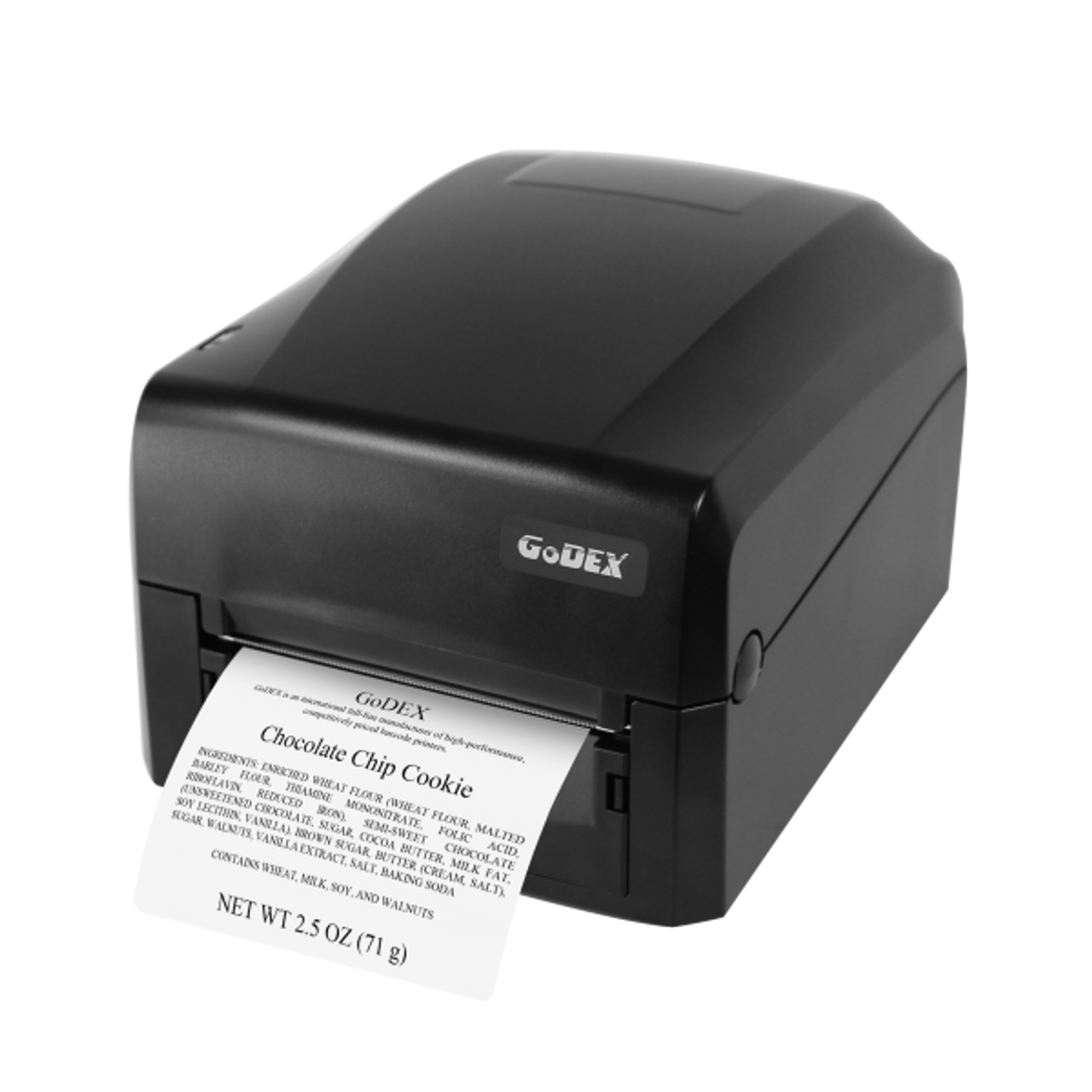
Reliable and affordable, the Godex GE300 offers dual printing modes, thermal transfer and direct thermal. This printer is ideal for food packaging applications that require moderate output volumes and durable label materials. It's widely used in delis, bakeries, and grocery stores for labelling packages, containers, and wrapped products.
Key Features:
-
Dual-mode: thermal transfer & direct thermal
-
4-inch wide print support
-
203 dpi resolution
-
Uses 243 ft (74m) length ribbons
Pros:
-
Affordable entry into thermal transfer labelling
-
Great for ingredient labels and bakery items
-
Compatible with waterproof and freezer-safe labels
Cons:
-
Lower resolution for detailed logos
-
Limited advanced features
6. Godex G500 4-Inch Wide 203 dpi Desktop Thermal Transfer Label Printer
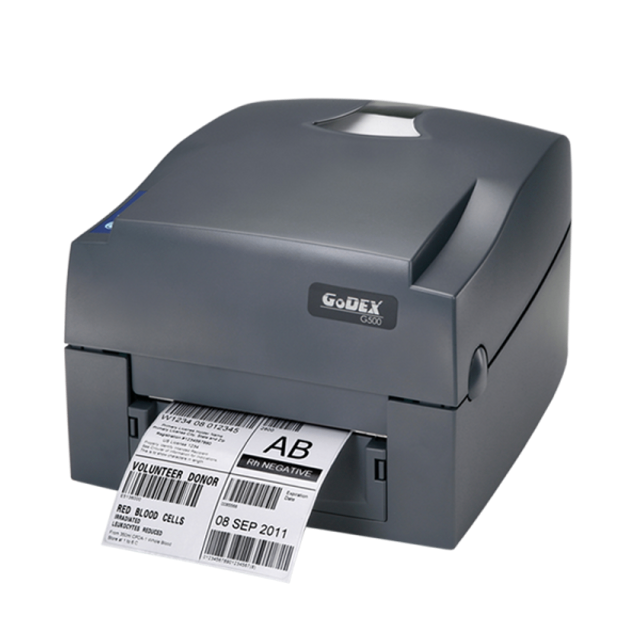
The Godex G500 features a 203 dpi resolution and dual ribbon/mode capability, making it a versatile choice for businesses that print various types of food labels. It's compact yet powerful enough to handle small batches and daily production runs, offering excellent value for those seeking the best label printer for food packaging at an entry-level price point.
Key Features:
-
4-inch width
-
203 dpi
-
Dual-mode printing
-
Uses 984 ft (300m) length ribbons
Pros:
-
Versatile for both logistics and food labelling
-
Easy setup and operation
-
Supports a variety of label media
Cons:
-
Basic display and configuration options
-
Not ideal for fine graphic elements
7. Godex ZX420i 4"-Wide 203 dpi Industrial Thermal Transfer Label Printer
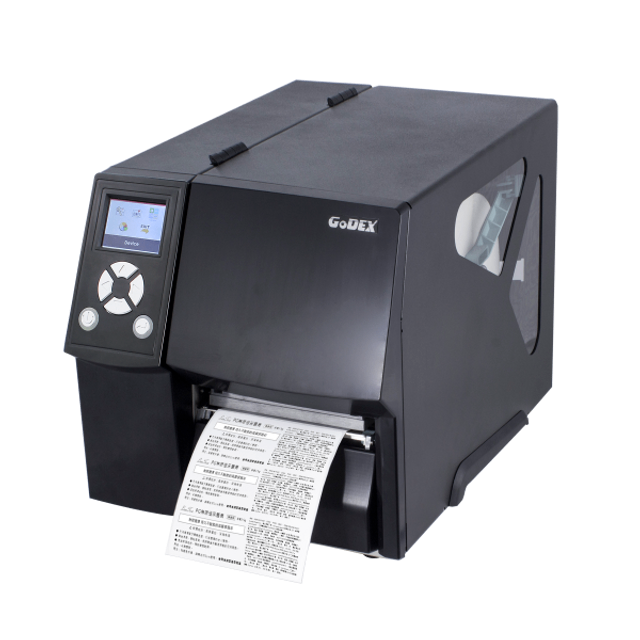
For industrial food production environments, the Godex ZX420i is a workhorse. This model prints at 6 inches per second, offering exceptional durability and accuracy, even in demanding conditions such as refrigerated facilities or production lines. It supports large label rolls and high ribbon capacity, reducing downtime and boosting operational efficiency.
Key Features:
-
Industrial-grade construction
-
4-inch width
-
6 ips speed
-
High-volume support
-
Uses 1476 ft (450m) length ribbons
Pros:
-
Built for continuous operation
-
Large roll and ribbon capacity
-
Perfect for food factories and warehouses
Cons:
-
Bulkier than desktop models
-
Higher upfront cost
8. Afinia L502 Colour Label Printer
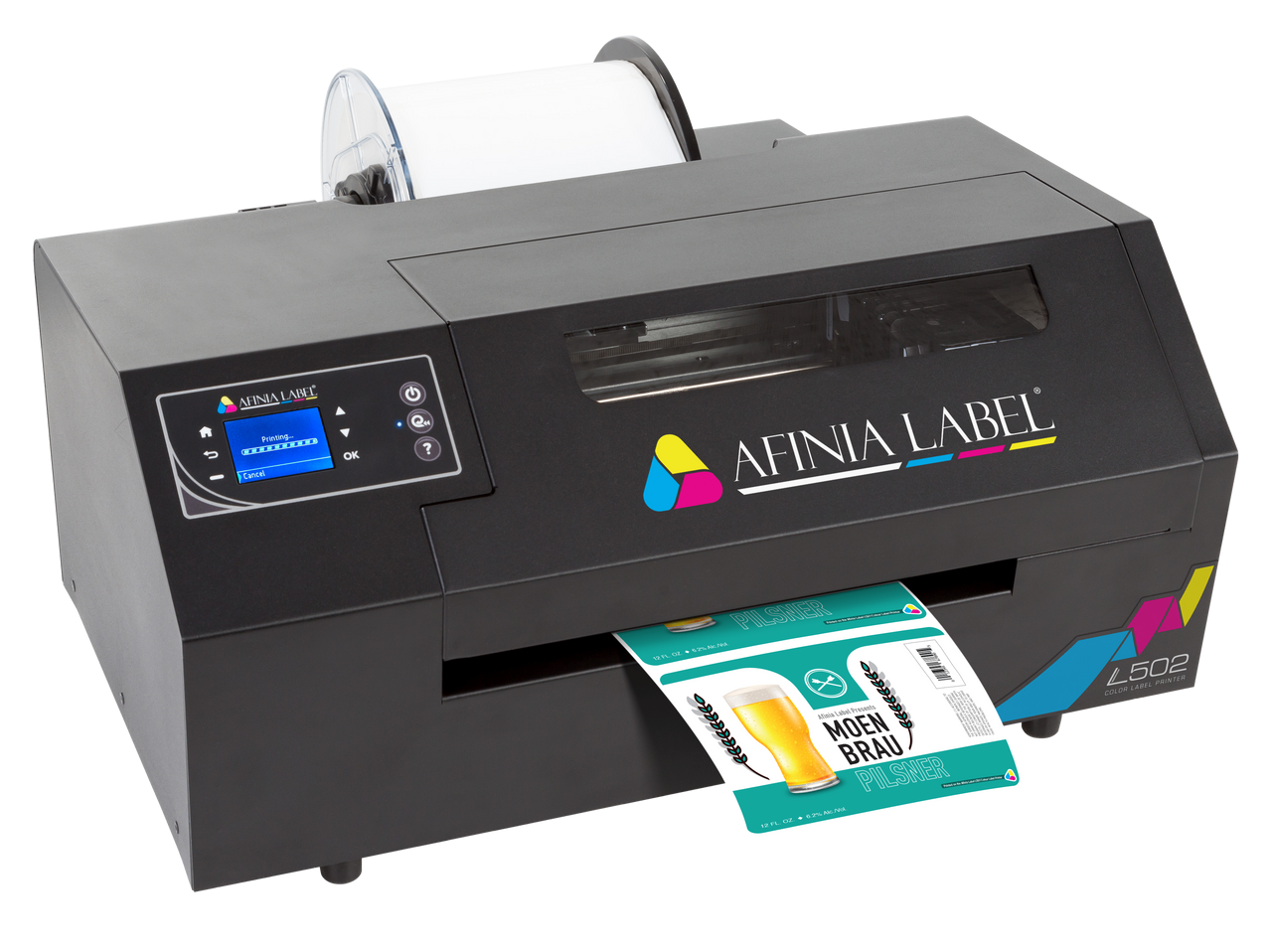
The Afinia L502 is engineered for high-impact food packaging labels that require vivid colour and water-resistant durability. With support for both dye and pigment inks, this printer offers flexibility in balancing colour vibrancy and resistance to moisture, oil, or smudging, ideal for items such as sauces, condiments, or gourmet snacks.
Key Features:
-
Pigment and dye ink support
-
Up to 4800 dpi resolution
-
Up to 8.5-inch label width
Pros:
-
Print waterproof and smudge-proof labels
-
Ideal for jars, pouches, and artisanal products
-
Professional finish with full-colour branding
Cons:
-
Higher ink cost
-
Requires occasional maintenance and calibration
9. VIPColor VP500 Colour Label Printer Featuring Memjet Technology
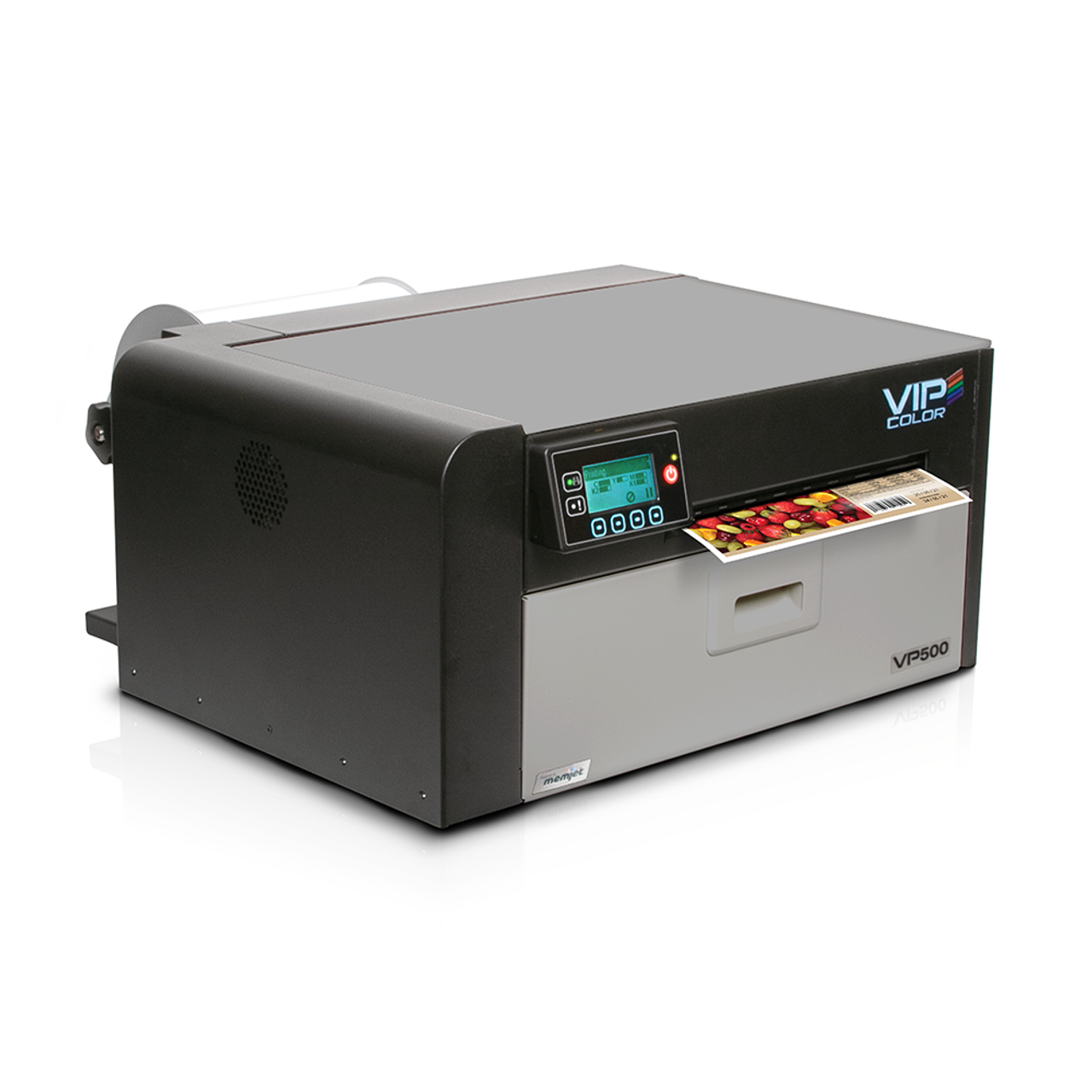
Using Memjet Technology, the VIPColor VP500 is optimized for fast, full-colour printing at high resolution. It’s an excellent choice for mid-size food manufacturers looking to produce professional-grade product labels in-house. This printer stands out for its low ink costs and is one of the best label printers for food packaging in the premium segment.
Key Features:
-
Memjet-powered high-speed output
-
Full-colour 1600 dpi resolution
-
Up to 8.5 inches wide
Pros:
-
Fast, commercial-quality labels
-
Efficient ink usage = lower cost per label
-
Excellent for gourmet and retail food brands
Cons:
-
Dye ink is less UV- and water-resistant
-
Requires Memjet-specific label stock
10. Primera LX4000 Colour Label Printer
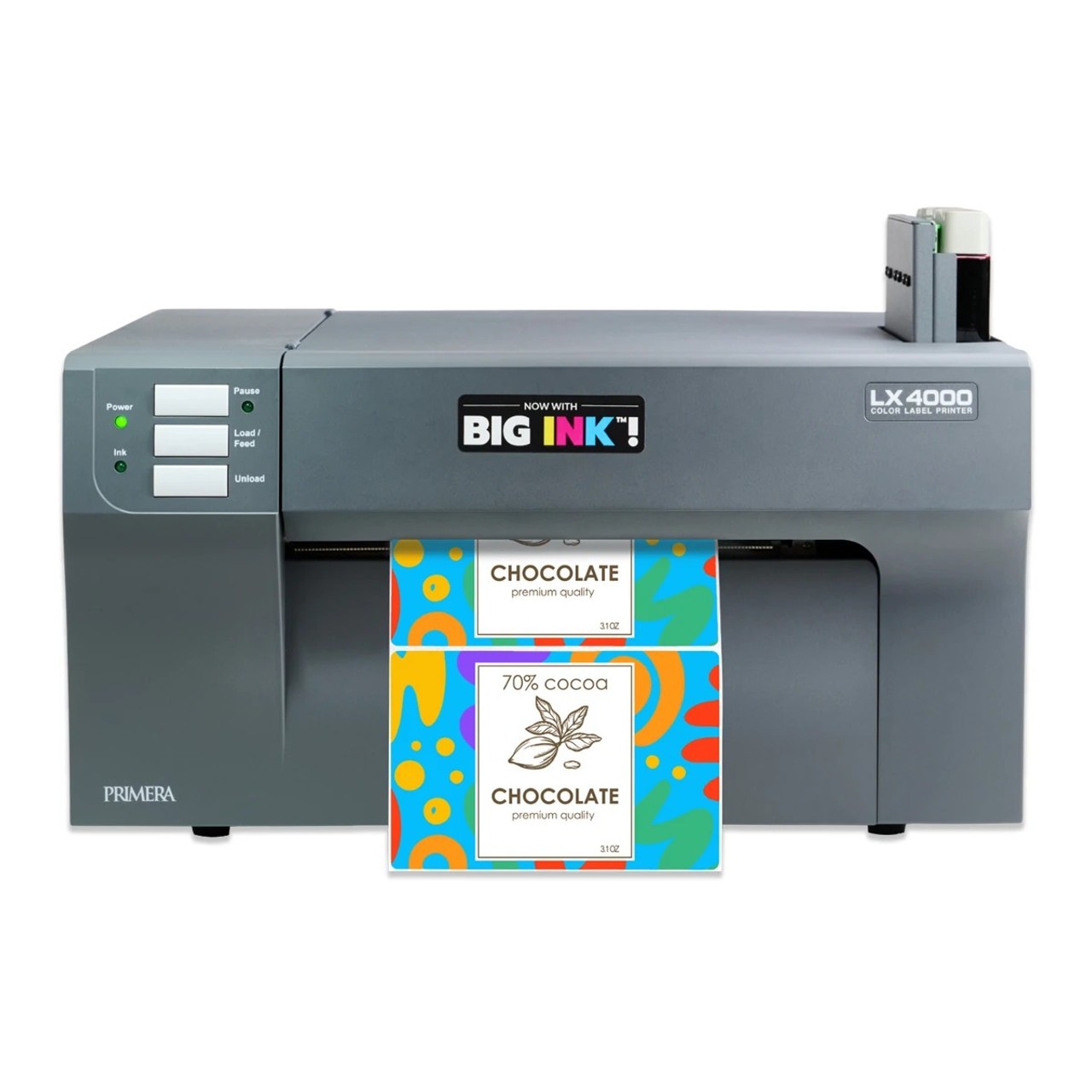
The Primera LX4000 offers high-resolution, full-colour output, making it perfect for retail-ready food products. From tea tins to organic granola pouches, this printer helps elevate your packaging presentation. It supports large label rolls and uses dye-based inks to produce vibrant, eye-catching labels with impressive detail.
Key Features:
-
Dye-based ink system
-
Up to 4800 dpi resolution
-
Compact, professional-grade output
Pros:
-
Great for food businesses needing vibrant product packaging
-
Supports flexible label sizes and materials
-
Plug-and-play with intuitive software
Cons:
-
Ink can smear in moist conditions
-
Slower than other Memjet models for large volumes
11. Afinia L801 Inkjet Colour Label Printer

Built for production environments, the Afinia L801 delivers up to 1600 dpi resolution and high-speed colour printing. It’s a top-tier solution for businesses that require printing a large volume of high-quality labels with logos, allergen information, and multilingual content. This printer is highly recommended for businesses scaling up their food product lines.
Key Features:
-
1600 dpi Memjet resolution
-
Up to 8.5-inch wide printing
-
High-volume printing engine
Pros:
-
High-speed, commercial-scale colour printing
-
Sharp graphics and vivid branding
-
Compatible with roll-fed label stock for batch runs
Cons:
-
Larger machine, requires dedicated space
-
Higher initial and operating cost
Your Food Labels Deserve More Than Just a Printer; Partner with DuraFast for Precision, Compliance, and Shelf Impact
Looking for the best label printer for food packaging? Don’t just buy a machine, invest in a trusted partner. DuraFastLabel.ca helps food brands across Canada create labels that meet CFIA regulations, withstand real-world conditions, and stand out in-store. From ingredient stickers to high-impact branding, we provide:
-
Industry-Leading Printers from TSC, Godex, Afinia, and more
-
Fast, Reliable Canadian Shipping, no border delays
-
Expert, Industry-Specific Support to help you choose and configure the right solution
-
Food-Safe, Durable Labels that work in freezers, fridges, and retail aisles
Make every label count. Choose DuraFastLabel.ca, the wise choice for Canadian food producers who take quality seriously.
Conclusion
Choosing the best label printer for food packaging means balancing FDA compliance, durability, and standout presentation. Thermal barcode printers are ideal for fast, cost-effective printing of ingredient, shipping, and barcode labels. Meanwhile, colour inkjet printers, such as Primera and Epson, deliver vibrant, high-resolution results for specialty food labels and branded packaging.
For businesses that need to print their own product labels, modern printers offer wireless connectivity, compact designs suitable for limited space, and fast lead times. Whether you sell on Amazon or in-store, the right printer —thermal, laser, or inkjet—should match your print volume, materials, and labelling goals. Look for ease of use, essential accessories, and sharp print resolution to make the perfect fit.
Frequently Asked Questions:
What type of label material is best for food packaging in Canada?
For thermal printers, direct thermal or thermal transfer paper labels are standard. For frozen foods, matte polypropylene labels offer superior moisture resistance. Colour label printers work best with inkjet high-gloss paper or glossy polypropylene, with polypropylene preferred for cold storage due to its durability and waterproof properties.
Are there printers that support bilingual (English/French) food labels?
Yes, most thermal and colour label printers support custom label design, including bilingual (English/French) layouts. Software like BarTender and NiceLabel allows easy formatting for Canadian compliance. Colour printers are beneficial for visually distinguishing both languages, helping you meet CFIA labelling regulations for packaged food products.
How do I ensure my food labels are waterproof and smudge-proof?
To ensure durability, choose thermal transfer labels with resin or wax/resin ribbons, or polypropylene inkjet labels paired with pigment-based inks. Zebra’s thermal transfer printers are ideal for creating these combinations as they resist water, oil, and smudging, making them suitable for extreme temperatures. Always consider waterproof labels for high-moisture environments. Avoid direct thermal labels for high-moisture environments. Always test printed labels under real storage or refrigeration conditions before final production.
What maintenance is required for food label printers?
Regular maintenance includes cleaning printheads, replacing worn ribbons or ink cartridges, and removing dust or label residue. Thermal printers require less frequent upkeep, while inkjet colour printers need occasional nozzle checks and alignment. Following the manufacturer's maintenance schedule ensures consistent print quality and extends the printer’s lifespan.
